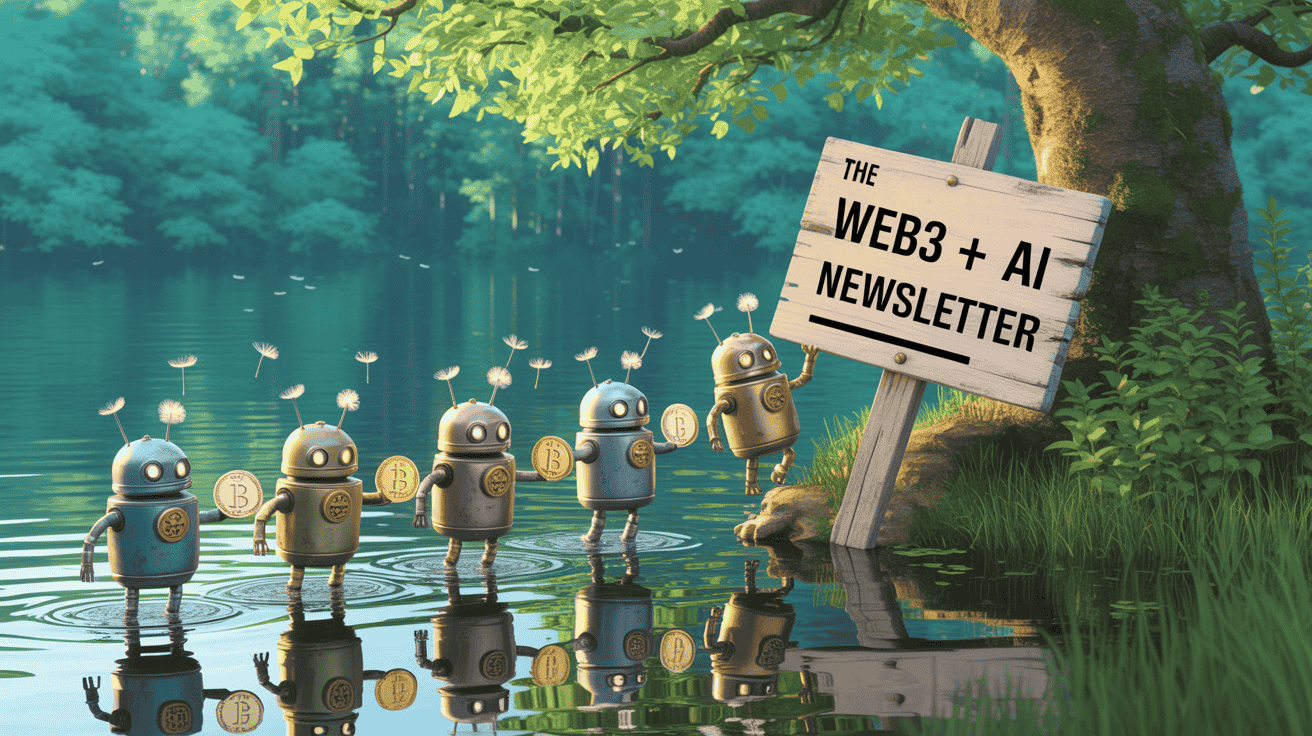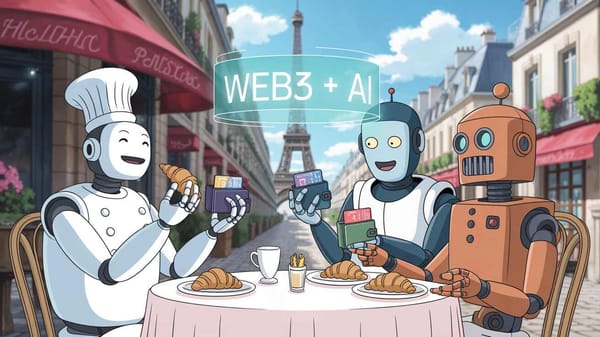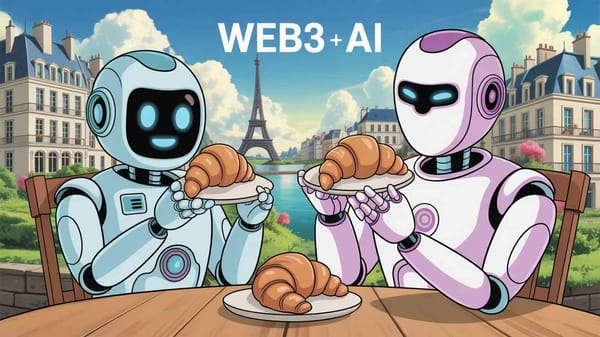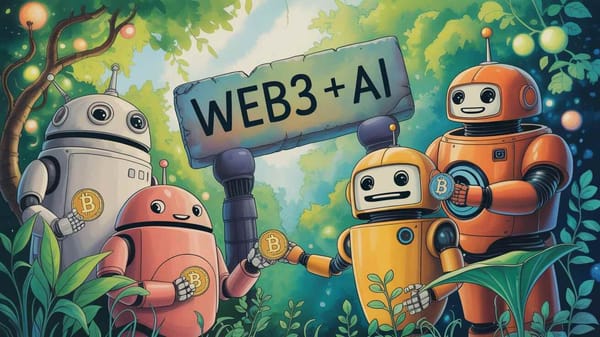A Practical Guide to Copyright Protection in the Age of AI
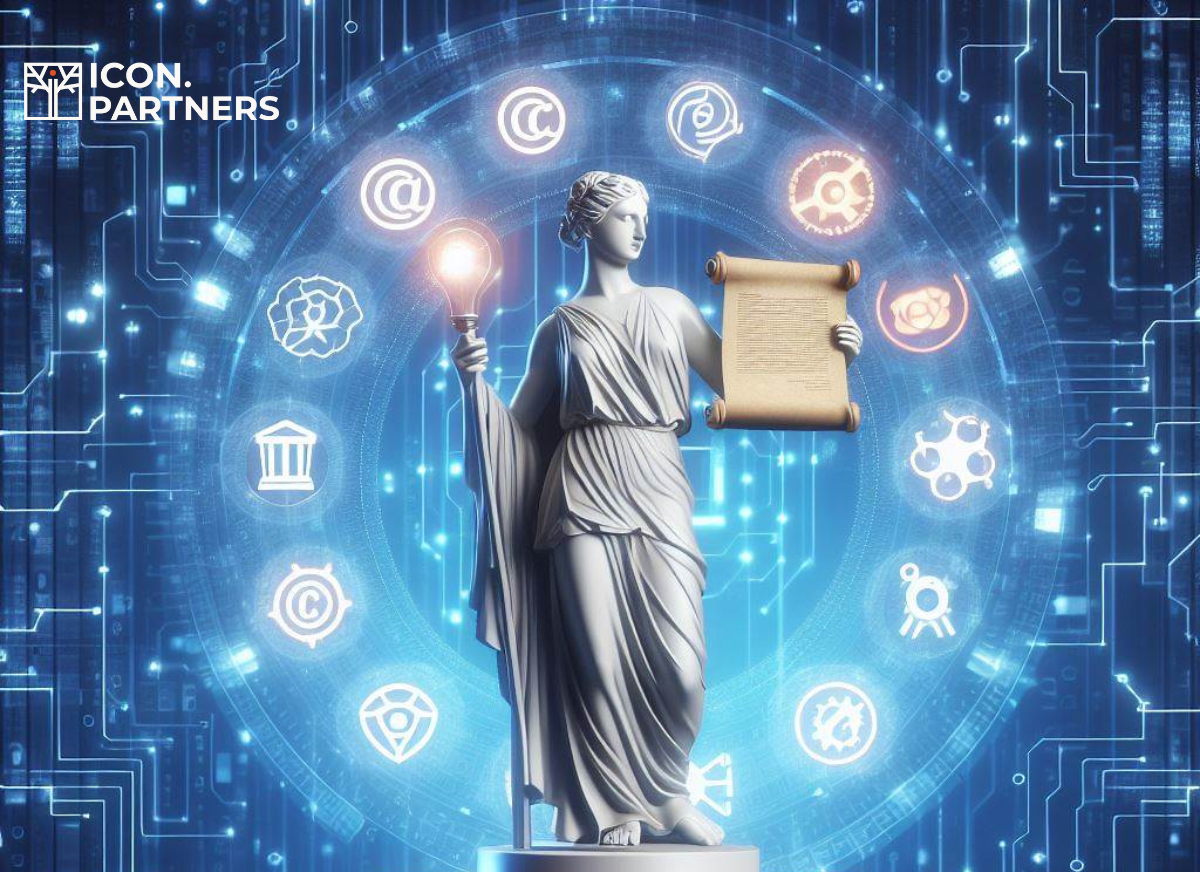
Hello, everyone, and welcome to all new subscribers!
This is the Web3 + AI newsletter, where we explore the intersection of blockchain and artificial intelligence. It is an enormous pleasure for me to present Web3 + AI's first-ever guest writer Hanna Verbytska, Social Media Manager for tech-focused law firm Icon.Partners. Specializing in FinTech, blockchain, and artificial intelligence, Hanna is here to share valuable insights on copyright protection in the age of AI. In a time when nation-states around the world assume different stances on intellectual property rights and AI, Hanna's guide will be a useful resource for everyone!
Thank you for being here! Let's dive in!
The rapid progress of artificial intelligence (AI) presents exciting opportunities but also complex challenges for copyright protection. This article serves as a practical guide, offering legal-oriented insights on operating the intricate field of AI-generated content and safeguarding intellectual property rights.
With investments in AI expected to reach a staggering $158B by 2025 (as per Goldman Sachs research), tech giants like Microsoft, Adobe, and GitHub are actively integrating AI into their products. Startups are also vying for a slice of the pie, raising hefty funds to compete in this burgeoning field.
In practice, most AI systems thrive on vast amounts of data scraped from the internet, encompassing text, code, and images. For instance, GPT-3 was trained on user-generated publications on Wikipedia and Reddit, among other sources. This raises an ethical and legal quandary – who owns the copyright to the content used to train the AI? If one is using their creations to train an AI model, there won’t be any copyright issues to deal with. However, a problem arises when public informational resources having copyright protection and confidentiality clauses are used.
Each country and jurisdiction has a unique approach to defining and regulating AI-generated materials. For instance, the US copyright law explicitly indicates that a human has creative control and freedom of expression and forms a creative work’s authorship. On the other hand, according to the regulatory system of Spain, the absence of copyright over works created by robots and artificial agents is legalized. China became an exception when this recent court decision granted copyright protection to AI-generated images. Therefore, taking your local jurisdiction’s legislation into account is paramount when determining whether your AI-generated art or content will enjoy intellectual property rights.
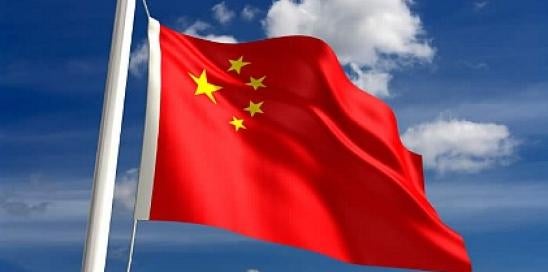
Legal Precedents
Let's discover some of the latest case laws and court practice in the field of copyright and AI:
- Midjourney & the Copyright Conundrum
In September 2022, the US Copyright Office approved the registration of a comic book created with the help of the AI tool Midjourney. This decision sparked controversy, leading to a lawsuit filed by three artists. They accused Midjourney and DeviantArt of violating the rights of millions of artists by training their AI models on billions of images without prior consent.
The lawsuit highlights the growing concerns about fairness and ethics amid enhanced AI development. The plaintiffs' defense emphasizes that the flood of AI-generated content could harm the art market and individual artists, while also considering such cases as a crucial step towards a more responsible and equitable AI sphere.
- The “Break Free” Song & AI legal compliance
In 2017, singer Taryn Southern released “Break Free” - a pop single composed entirely by AI. This sparked debate about AI music copyright. Some argue the AI's rearrangement of existing musical elements falls under Fair Use, while others believe its unique composition deserves protection. Additionally, traditional royalty structures for human artists don't seamlessly fit AI creators, leaving questions about who receives financial compensation.
The AI simply rearranged existing musical elements, a practice covered by fair use for transformative purposes. Critics counter that the AI's unique and complex melody, harmony, and rhythm constitute an original creation worthy of copyright protection. “Break Free” is a case study for reimagining legal frameworks and ethical considerations for AI-powered music creation in the digital age.
- NYT vs. Microsoft & OpenAI
The New York Times suing AI lab OpenAI and partner company Microsoft over copyright infringement is the latest example of a high-impact intellectual property lawsuit. The case alleges that through Microsoft’s Bing Chat and OpenAI’s ChatGPT, the defendants seek to free-ride on The Times’ massive investment in its journalism production by using it to build substitute products without permission or payment. The case also distinguishes that OpenAI's language model, GPT, mimics The Times’ style and recites its content verbatim. The Times is the first major American news outlet to sue OpenAI and Microsoft for copyright infringement, whereas the defense relies once again on the Fair Use doctrine.
What Constitutes a Fair Use of Copyrighted Content for AI Training
Training AI on copyrighted works might fall under the fair use doctrine, allowing limited use of such material without permission. However, several factors influence this determination, such as:
1. Transformative nature of use: The AI-generated content must significantly differ from the original work, potentially serving as commentary, critique, or parody.
2. Nature of the original work: The level of protection afforded to the original work plays a crucial role. Information from a documentary might be viewed more favorably than the one borrowed from a fiction text.
3. Scope and materiality of use: The amount and significance of the original work used in the AI output are evaluated. Borrowing small, inconsequential bits might be permissible, while utilizing the “heart” of the copyrighted material could be deemed infringing.
4. Impact on the market or value of the original work: The AI-generated content should not directly compete with or negatively impact the market value of the original work.
Human Intervention: the key to copyright?
In March 2023, The US Copyright Office (USPTO) reviewed its vision concerning AI-generated content by publishing guidance on new copyright registration for works featuring AI-generated materials. The guidance stipulated the possibility of AI-generated content to be copyrighted if there is some degree of human input involved in the creation process. The Office is the one body determining whether the contribution of AI is the result of mechanical generation work, or, on the contrary, the author's own original creative conception. To some extent, this means that a work containing material created by AI can also provide sufficient human authorship to support a copyright claim. The USPTO delivered that opinion as part of the Midjourney case, where the comic book author was asked to provide further details about her creative process, emphasizing the extent of human involvement. All of this suggests that the degree of human participation could be a determining factor in copyright protection for AI-generated content.
Recommendations for Secure AI Content Generation
If you want to make sure that your AI-generated creations receive legal protection, these are my suggestions on the steps you need to follow:
- Prioritize human involvement: Actively participate in the AI generation process by refining keywords, selecting prompts, and manually editing the output. This demonstrably increases human contribution.
- Choose freely available data: Opt for public domain or explicitly CC0-licensed data sets to minimize copyright infringement risks
- Focus on transformative use: Aim to create new and original content through the AI, rather than mere reproductions or derivatives
- Consult legal professionals: When navigating complex scenarios or using highly protected material, seek guidance from qualified legal counselors. For instance, Icon.Partners is a company that provides legal services to blockchain, tech, e-commerce, and fintech businesses, specializing in intellectual property laws in different countries.
Being involved in the legal world of AI-generated content requires meticulous attention to detail and a nuanced understanding of copyright law. By prioritizing human involvement, utilizing readily available data, and embracing transformative use, creators can leverage the power of AI while safeguarding their intellectual property rights.
Remember, staying informed about evolving legal precedents and consulting legal experts when needed is vital to maximize your creative freedom and minimize legal risks in the dynamic world of AI!
Disclaimer: None of this should or could be considered financial advice. You should not take my words for granted, rather, do your own research (DYOR) and share your thoughts to create a fruitful discussion. Moreover, guest posts express solely the author's opinions and do not necessarily represent the position of the Web3 + AI publication.

